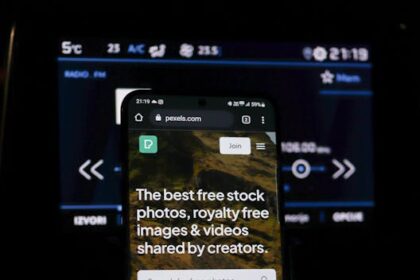Creating shareable content for social media engagement stands as a paramount objective for any brand, individual, or organization aiming to amplify their digital footprint and foster robust online communities. Shareability transcends mere likes and comments; it signifies that content resonates so deeply with an audience that they feel compelled to disseminate it within their own networks, effectively transforming recipients into brand advocates. This organic spread, often termed virality, is the gold standard for reach and authentic engagement, far surpassing the efficacy of paid promotion alone. Understanding the intricate psychology and practical mechanics behind why people share content is the foundational step in crafting a successful social media strategy.
The psychology of sharing content is multi-faceted, often driven by a combination of intrinsic and extrinsic motivations. Research suggests five key drivers: expressing identity, providing useful information, nurturing relationships, advocating for causes or brands, and simply entertaining others. Content that allows individuals to project a desired self-image – intelligent, humorous, informed, compassionate – often achieves high share rates. Similarly, utility-driven content, such as tips, tutorials, or problem-solving insights, is widely shared because it adds value to the recipient’s network. Emotional resonance is another powerful catalyst; content that evokes strong emotions, whether awe, anger, joy, or surprise, is significantly more likely to be shared. Furthermore, social currency, the idea that sharing certain content makes one appear more knowledgeable, cool, or connected, plays a crucial role. Brands that tap into these psychological triggers by creating content that aligns with user motivations naturally unlock higher share rates. It’s about creating an undeniable connection, making the audience feel something, learn something, or gain something that they believe others in their network would also benefit from or enjoy. This requires a deep understanding of the target audience, their values, their challenges, and their aspirations, moving beyond superficial demographic data to truly grasp their behavioral patterns and emotional drivers on social platforms.
Core Pillars of Shareable Content
Developing content that consistently achieves high shareability requires a strategic approach built upon several foundational pillars. These elements, when combined effectively, transform passive consumption into active dissemination.
1. Value Proposition:
At its heart, shareable content must offer undeniable value. This value can manifest in various forms:
- Informative/Educational: Content that teaches, explains, or provides new insights. This includes how-to guides, tutorials, data-driven reports, expert analyses, or detailed explainers of complex topics. Users share this to demonstrate their knowledge or to help others learn.
- Entertaining: Humorous anecdotes, captivating stories, engaging videos, witty memes, or inspiring narratives. Entertainment provides an escape, a laugh, or a moment of joy, making it highly sharable for its pure enjoyment factor.
- Inspirational/Motivational: Quotes, stories of triumph, messages of hope, or calls to action that uplift and encourage. People share these to inspire their network or to reinforce positive beliefs.
- Problem-Solving: Content that directly addresses a common pain point or offers a solution to a widespread challenge. This includes hacks, tips, product recommendations, or life advice. Users share this to genuinely assist their friends and followers.
- Newsworthiness/Timeliness: Breaking news, real-time reactions to current events, or unique insights into unfolding situations. Being first to share relevant, timely information positions individuals as informed and connected.
2. Emotional Resonance:
Content that elicits a strong emotional response is significantly more likely to be shared. This isn’t limited to positive emotions; negative emotions, when handled appropriately, can also drive sharing.
- Awe/Inspiration: Content that displays breathtaking beauty, extraordinary achievements, or profound wisdom.
- Joy/Humor: Witty observations, hilarious videos, or genuinely funny memes. Laughter is a powerful connector.
- Anger/Outrage: Content that exposes injustice, highlights unfairness, or calls attention to critical issues. This often drives sharing for advocacy or to rally support for a cause.
- Empathy/Sadness: Stories of struggle, resilience, or shared human experience that evoke compassion.
- Surprise/Curiosity: Unexpected facts, mind-bending illusions, or intriguing questions that pique interest.
3. Relatability:
When content mirrors a user’s own experiences, thoughts, or feelings, it creates a powerful sense of connection.
- Shared Experiences: Content that describes common daily struggles, triumphs, or humorous situations that many people can identify with.
- Universal Truths: Insights into human nature, relationships, or life lessons that resonate across diverse demographics.
- Niche Identification: Content that speaks directly to a specific community, profession, hobby, or subculture, strengthening group identity.
4. Uniqueness/Novelty:
In an increasingly crowded digital landscape, content that offers a fresh perspective, an unexpected insight, or a completely new idea stands out.
- Original Research: Presenting new data or findings that haven’t been widely disseminated.
- Counter-Intuitive Insights: Challenging common assumptions or offering a perspective that goes against the grain.
- Creative Execution: Presenting information in a visually stunning, innovative, or highly artistic manner.
- Early Access/Exclusivity: Providing a sneak peek, a first look, or insider information.
5. Actionability:
Content that provides practical steps, clear instructions, or actionable advice is highly valued.
- How-To Guides: Step-by-step instructions for achieving a specific outcome.
- Checklists/Templates: Resources that simplify complex tasks or provide structured frameworks.
- Tips & Tricks: Concise, valuable advice that can be immediately applied.
- Challenges/Prompts: Engaging users to participate, create their own content, or try something new.
6. Visual Appeal:
In a visually-driven social media environment, high-quality, engaging visuals are non-negotiable.
- Professional Photography/Videography: High-resolution images and well-produced videos capture attention.
- Infographics: Complex data presented in an easily digestible, visually appealing format.
- Creative Graphics: Branded imagery, custom illustrations, or well-designed text overlays.
- Consistent Branding: Visuals that align with brand colors, fonts, and aesthetic, making content instantly recognizable.
7. Clear Call to Action (Explicit & Implicit):
While an explicit “Share this!” button is often present, the most effective calls to action are often implicit, woven into the content’s design.
- Questions: Posing thought-provoking questions that encourage discussion and sharing of opinions.
- Polls/Quizzes: Interactive elements that invite participation and naturally lead to sharing results.
- Challenges: Encouraging users to participate and share their own creations or experiences.
- Relatability Statements: Phrases like “Can you relate?” or “Tag a friend who…”
- Value-Driven Design: Content so inherently valuable or entertaining that sharing becomes the natural next step, without explicit prompting.
8. Community & Identity:
Content that strengthens a group’s identity or allows individuals to express their affiliation with a specific community is highly shareable.
- Inside Jokes/Memes: Content specific to a niche community that only insiders would understand, fostering a sense of belonging.
- User-Generated Content (UGC) Showcases: Highlighting contributions from community members, empowering them to share.
- Brand Advocacy: Content that enables users to express their loyalty or passion for a brand, cause, or lifestyle.
- Discussion Prompts: Initiating conversations around topics central to the community’s interests.
By consistently integrating these pillars into content creation, brands can systematically increase the likelihood of their content being shared, leading to exponential growth in reach and engagement. It moves beyond simply publishing content to crafting experiences that resonate deeply enough to compel dissemination.
Content Formats for Maximum Shareability
The format in which content is presented significantly impacts its shareability. Different platforms favor different formats, and understanding these nuances is crucial for optimizing reach.
1. Video Content:
Video reigns supreme across most social media platforms due to its immersive nature and ability to convey complex messages efficiently.
- Short-form Video (Reels, TikToks, YouTube Shorts): Highly effective for quick, engaging narratives, humor, dance challenges, educational snippets, or product demonstrations. Their brief nature makes them easy to consume and share rapidly, often leveraging trending sounds and filters.
- Long-form Video (YouTube, Facebook Watch): Ideal for tutorials, in-depth interviews, vlogs, documentaries, or episodic series. These build deeper engagement and allow for more comprehensive storytelling. Shareability here often comes from providing immense value or compelling narratives.
- Live Video (Facebook Live, Instagram Live, YouTube Live): Fosters real-time interaction, Q&As, product launches, or behind-the-scenes glimpses. The immediacy and authenticity encourage live sharing and comments, and the replays can continue to generate shares.
- Explainer Videos/Animated Graphics: Simplify complex topics or processes into easily digestible, visually engaging formats. Highly shareable for their utility and clarity.
2. Image & Infographic Content:
Visuals capture attention quickly and can convey powerful messages without relying heavily on text.
- High-Quality Photography: Stunning visuals, aspirational imagery, or authentic behind-the-scenes shots that evoke emotion or curiosity.
- Infographics: Excellent for breaking down data, statistics, or complex information into an easily digestible and visually appealing format. They are highly shareable because they provide value at a glance.
- Motivational Quotes/Text Overlays: Visually appealing quotes that resonate emotionally or philosophically, often shared to inspire others or reflect personal beliefs.
- Memes & GIFs: Culturally relevant, humorous, and highly shareable due to their ability to convey a feeling or idea succinctly and often comically. They tap into current trends and inside jokes.
- Carousels (Instagram, LinkedIn): A series of images or short videos within a single post, allowing for storytelling, step-by-step guides, or showcasing multiple product features. This format encourages swiping, increasing engagement time.
3. Text-Based Content:
While visuals dominate, well-crafted text remains a powerful driver of engagement and shares.
- Thought Leadership Articles/Long-form Posts (LinkedIn, Facebook): In-depth analyses, industry insights, or personal reflections that position the creator as an expert or provide unique perspectives. Shared for intellectual value and professional networking.
- Polls & Questions: Directly engage the audience by asking for opinions or insights. The results or discussions generated can be highly shareable.
- Twitter Threads: A series of connected tweets that tell a longer story, provide detailed explanations, or break down complex information. Their sequential nature encourages reading and sharing.
- Stories (Instagram, Facebook, Snapchat): Short-lived, often informal content that offers a glimpse into daily activities, behind-the-scenes, or quick updates. While ephemeral, they drive immediate engagement and direct shares to friends.
4. Interactive Content:
Content that requires active participation often yields higher engagement and share rates.
- Quizzes: Entertaining quizzes that reveal personality traits, test knowledge, or provide fun insights. Users often share their results.
- Surveys/Polls: Asking for opinions on relevant topics, making users feel heard and invested.
- Contests & Giveaways: Encouraging users to share, tag friends, or follow accounts to enter, directly driving shareability.
- Challenges: Encouraging users to create their own content based on a prompt, then share it using a specific hashtag.
5. User-Generated Content (UGC):
Content created by the audience themselves, rather than the brand.
- Testimonials/Reviews: Authentic endorsements from real customers, highly trustworthy and shareable.
- Customer Stories/Features: Showcasing how customers use a product or service, celebrating their experiences.
- Fan Art/Creations: Highlighting creative expressions from the community.
- Hashtag Campaigns: Encouraging users to post content related to a specific theme or product using a unique hashtag, then curating and resharing the best entries. UGC is inherently shareable because it comes from a peer and feels authentic.
6. Data & Research:
Original data, statistics, or insightful reports.
- Infographics of Data: Presenting complex research in an easy-to-understand visual format.
- Key Findings Summaries: Distilling extensive research into bullet points or concise summaries.
- Trend Reports: Identifying and analyzing emerging patterns in an industry or culture.
- Benchmarks: Providing industry averages or best practices that help businesses or individuals evaluate their performance. These are shared for their authoritative value and actionable insights.
By diversifying content formats and tailoring them to platform strengths and audience preferences, creators can significantly increase the probability of their content being shared, leading to wider reach and deeper engagement. The key is to experiment, analyze performance, and continuously refine the content strategy based on what resonates most with the target audience.
Platform-Specific Shareability Strategies
While general principles of shareability apply across the board, each social media platform possesses unique characteristics, user behaviors, and algorithmic preferences that necessitate tailored content strategies. Optimizing for shareability means understanding these nuances and adapting content formats and distribution tactics accordingly.
1. Facebook:
- Audience: Broad demographics, strong emphasis on personal connections, groups, and community.
- Shareable Content:
- Emotional Videos: Short, impactful videos that evoke strong emotions (joy, empathy, inspiration, humor).
- Community-Driven Content: Posts that spark discussions within groups, polls, questions, or content that celebrates group identity.
- Live Streams: Q&As, behind-the-scenes, product launches; the real-time interaction encourages live sharing.
- Infographics & Educational Posts: Content that simplifies complex topics or offers practical tips.
- User-Generated Content: Reposting customer stories, testimonials, or content from fan pages.
- Personal Stories: Authentic narratives that reveal vulnerability or shared human experiences.
- Optimization Tips:
- Native video uploads perform best.
- Encourage comments and reactions, as high engagement signals content value to the algorithm.
- Leverage Facebook Groups for targeted sharing within niche communities.
- Ask questions in captions to spark discussion.
- Use compelling images and concise text for quick comprehension.
2. Instagram:
- Audience: Visual-first, aesthetics-driven, strong focus on lifestyle, inspiration, and personal branding.
- Shareable Content:
- Visually Stunning Imagery: High-quality photos that are aesthetically pleasing, aspirational, or evoke a strong mood.
- Reels: Short, creative, entertaining videos that leverage trending audio and visual effects. Highly shareable via direct messages and the “add to story” feature.
- Carousels: Ideal for storytelling, tutorials (e.g., “5 steps to…”), before-and-afters, or showcasing multiple product views. Each swipe increases engagement.
- Inspirational Quotes/Graphics: Branded visuals with uplifting messages.
- UGC in Stories/Posts: Resharing customer content with proper attribution.
- Behind-the-Scenes/Authentic Moments: Showing the human side of a brand or individual, fostering relatability.
- Optimization Tips:
- Utilize relevant hashtags (mix of broad and niche).
- Create shareable “stickers” or interactive elements for Stories.
- Encourage saving posts, which signals value to the algorithm.
- Collaborate with influencers for wider reach and implicit endorsements.
- Ensure content is optimized for mobile viewing.
3. Twitter:
- Audience: Real-time news, trending topics, concise communication, professional networking, and direct interaction.
- Shareable Content:
- Threads: Long-form thoughts broken into a series of tweets, perfect for in-depth analyses, personal stories, or tutorials. They capture sustained attention.
- News & Timely Information: Breaking news, quick reactions to current events, or unique insights on trending topics.
- Polls: Directly engage followers and gather opinions, with results often shared widely.
- Witty Commentary/Humor: Short, punchy, clever observations that resonate with a broad audience.
- GIFs & Memes: Highly effective for conveying emotion or humor succinctly.
- Questions: Posing direct questions to spark conversation and replies.
- Links to Valuable Content: Sharing insightful articles, reports, or research with a compelling hook.
- Optimization Tips:
- Use trending hashtags judiciously.
- Tag relevant accounts to increase visibility.
- Keep tweets concise and impactful for retweets.
- Engage with replies and quote tweets to foster dialogue.
- Ask for retweets explicitly but sparingly.
4. LinkedIn:
- Audience: Professional networking, industry insights, career development, thought leadership.
- Shareable Content:
- Thought Leadership Articles/Posts: In-depth analyses, personal reflections on industry trends, or original research. Position as an expert.
- Professional Development Tips: Advice on career growth, skills, or job searching.
- Industry News & Analysis: Sharing and commenting on relevant news with added professional insight.
- Success Stories/Case Studies: Demonstrating tangible results and impact.
- Company Culture/Behind-the-Scenes: Showcasing employee stories, values, and work environment.
- Polls: Gathering professional opinions on industry challenges or trends.
- Infographics & Data Visualizations: Especially when pertaining to business, market trends, or professional insights.
- Optimization Tips:
- Write engaging headlines for articles.
- Tag relevant companies or individuals.
- Encourage comments and discussion to boost algorithmic reach.
- Use professional images and videos.
- Engage with comments on your own posts to deepen connections.
5. TikTok:
- Audience: Gen Z and younger millennials primarily, highly creative, trend-driven, short-form video.
- Shareable Content:
- Trend Participation: Creating unique takes on trending sounds, challenges, or filters. This is key to virality.
- Humor/Skits: Short, punchy comedic videos that are highly relatable or unexpected.
- Educational Snippets/Life Hacks: Quick tutorials, “how-to”s, or surprising tips delivered entertainingly.
- Storytelling: Using short video to tell compelling narratives or share personal anecdotes.
- Behind-the-Scenes/Authentic Content: Raw, unpolished glimpses that feel genuine.
- Dance/Performance Challenges: Engaging users to participate and create their own versions.
- Optimization Tips:
- Use trending sounds strategically.
- Keep videos short and engaging from the first second.
- Utilize popular hashtags.
- Encourage duets and stitches, which are built-in sharing mechanisms.
- Engage with comments and participate in the community.
6. Pinterest:
- Audience: Primarily visual discovery, inspiration, planning, shopping, and DIY. Not a traditional social networking site, but a visual search engine.
- Shareable Content:
- Infographics: Highly visual, information-rich pins that serve as practical guides or educational resources (e.g., recipes, craft instructions, historical timelines).
- DIY Tutorials/How-Tos: Step-by-step visual guides for projects, recipes, or life hacks.
- Inspirational Boards: Curated collections of aesthetically pleasing images related to fashion, home decor, travel, etc.
- Product Catalogs/Shop Pins: Visually appealing product images that link directly to e-commerce sites.
- Long-form Pins: Tall, vertical images that showcase a lot of detail or multiple steps.
- Optimization Tips:
- Use keyword-rich descriptions for pins and boards.
- Create visually appealing, vertical pins.
- Link pins back to original content (blog posts, product pages).
- Create multiple pins for the same piece of content to test what resonates.
- Organize pins into relevant boards.
7. YouTube:
- Audience: Video-first, entertainment, education, long-form content, niche communities.
- Shareable Content:
- Tutorials/How-Tos: In-depth guides for specific skills or software.
- Educational Series: Multi-part videos that explore a topic comprehensively.
- Entertaining Vlogs/Skits: Engaging storytelling, humor, or personal insights.
- Product Reviews/Unboxings: Informative content that helps viewers make purchasing decisions.
- Documentaries/Explainer Videos: High-quality, informative content on various subjects.
- Collaborations: Partnering with other YouTubers to cross-promote and reach new audiences.
- Optimization Tips:
- Optimize titles, descriptions, and tags with relevant keywords.
- Create compelling thumbnails to attract clicks.
- Encourage likes, comments, and subscriptions to boost visibility.
- Use end screens and cards to promote other videos.
- Promote videos on other social media platforms and email lists.
By strategically aligning content creation with the unique strengths and audience behaviors of each platform, brands can significantly enhance the shareability of their content, leading to organic growth and sustained engagement. It’s not just about posting; it’s about platform-specific prowess.
Optimizing for Shareability: Technical and Strategic Elements
Beyond the content itself, various technical and strategic elements play a crucial role in maximizing shareability. These aspects ensure that once compelling content is created, it reaches the widest possible audience and is easy for them to share.
1. Timing and Frequency:
- Audience Activity Peaks: Identify when your target audience is most active on specific platforms. Tools like social media analytics dashboards provide insights into peak engagement times. Posting during these windows increases initial visibility and the likelihood of shares.
- Consistent Frequency: Regular posting keeps your audience engaged and your brand top-of-mind. However, quality always trumps quantity; avoid overwhelming your audience with too many posts. Find a sustainable frequency that allows for high-quality content creation.
- Timeliness/Newsjacking: Capitalize on trending topics, current events, or cultural moments. Timely, relevant content often goes viral due to its immediate relevance. However, ensure newsjacking aligns with your brand voice and doesn’t appear opportunistic or insensitive.
2. Hashtag Strategy:
- Relevance: Use hashtags that are directly relevant to your content, industry, and target audience. Irrelevant hashtags can appear spammy.
- Mix of Popular & Niche: Incorporate a blend of broad, high-volume hashtags for wider reach and niche, specific hashtags to connect with targeted communities.
- Trending Hashtags: Monitor trending hashtags and integrate them where appropriate, but only if they genuinely fit your content and brand message.
- Branded Hashtags: Create unique hashtags for campaigns, events, or your brand. Encourage your audience to use them, fostering UGC and easy content aggregation.
- Platform-Specific Use: The optimal number and type of hashtags vary by platform (e.g., Instagram benefits from many; Twitter and LinkedIn prefer fewer, more strategic ones).
3. Cross-Promotion and Distribution:
- Amplify Across Channels: Don’t limit content to a single platform. Share your Instagram Reels on Facebook, embed YouTube videos in blog posts, and tweet links to your LinkedIn articles.
- Email Marketing: Leverage your email list to promote your best social content. Include direct links to posts that you want to see shared.
- Website/Blog Integration: Embed social share buttons prominently on your website and blog posts. Make it easy for visitors to share your content on their preferred platforms.
- Partnerships & Collaborations: Work with influencers, complementary brands, or community leaders to co-create content or have them share your content with their audience. This introduces your content to new, relevant networks.
- Internal Sharing: Encourage employees to share company content on their personal social media profiles. Employee advocacy can significantly extend reach.
4. Influencer Marketing & Community Leveraging:
- Authentic Partnerships: Collaborate with influencers whose audience aligns with yours and who genuinely resonate with your brand. Their endorsement can drive significant shares.
- Micro-Influencers/Nano-Influencers: These often have highly engaged, niche audiences and can be very effective for targeted shareability.
- Community Activation: Engage directly with your most loyal followers. Ask them to share, create challenges that involve sharing, and celebrate their contributions. Empower your brand advocates.
5. Accessibility and Mobile Optimization:
- Captions/Transcripts for Video: Essential for viewers who watch without sound (which is most social media consumption) or for those with hearing impairments. This expands your audience.
- Alt Text for Images: Describe images for visually impaired users and for SEO purposes.
- Clear, Readable Fonts: Ensure text on images or in videos is legible.
- Mobile-First Design: A vast majority of social media consumption occurs on mobile devices. Ensure all content (images, videos, text) is optimized for quick loading and appealing display on smaller screens. Slow loading times or poorly formatted content will deter shares.
6. Easy Sharing Mechanisms:
- Prominent Share Buttons: Ensure that share buttons are easily visible and functional on all content and web pages.
- Embed Options: For video and rich media, provide clear embed codes so others can easily include your content on their own sites or blogs.
- Pre-filled Share Text: When possible, provide pre-populated share text that users can quickly modify, making it even easier to spread the word.
- Shortened URLs: Use URL shorteners (e.g., Bitly) for easier sharing and tracking, especially on character-limited platforms like Twitter.
7. Understanding Algorithmic Preferences:
- Engagement Signals: Algorithms prioritize content that generates high engagement (likes, comments, shares, saves, watch time). Shares are a particularly strong signal of value.
- Native Content: Upload content directly to the platform (e.g., native video on Facebook, images on Instagram) rather than linking out, as platforms often favor content that keeps users on their site.
- Consistent Interaction: Regularly engaging with comments and messages on your posts can signal to the algorithm that you’re active and fostering community, which can boost visibility.
- Content Format Preference: Stay updated on which content formats each platform’s algorithm is currently favoring (e.g., Reels on Instagram, short-form video on YouTube).
By diligently addressing these technical and strategic elements, content creators can significantly enhance the inherent shareability of their content, ensuring it not only resonates with the audience but also benefits from the amplification mechanisms built into social media platforms.
Measuring Shareability: Analytics and Feedback
To continuously improve content shareability, it’s crucial to move beyond intuition and rely on data-driven insights. Measuring performance allows creators to understand what resonates, what falls flat, and how to refine their strategy.
1. Key Metrics for Shareability:
- Share Count: The most direct metric, indicating how many times your content has been shared. This is the primary indicator of virality.
- Reach: The total number of unique users who saw your content. A high share count typically leads to increased organic reach.
- Impressions: The total number of times your content was displayed. High impressions with low reach might indicate repeated views by the same users.
- Engagement Rate: Calculated as (Likes + Comments + Shares) / Reach or Impressions. A higher engagement rate indicates content resonance, with shares being the most valuable component.
- Click-Through Rate (CTR): If your content includes a link, CTR measures how many people clicked on it. While not directly a share metric, it indicates interest that could lead to sharing the linked content.
- Audience Growth: An increase in followers/subscribers can be an indirect result of highly shareable content exposing your profile to new audiences.
- Website Traffic from Social: If content drives traffic to your website, it signals effective content that prompted further action, which often involves sharing.
- Mentions/Tags: How often users mention or tag your brand/profile in their own content or comments, signifying organic conversation and advocacy.
- Saved Posts (Instagram/Pinterest): Users saving content for later indicates high perceived value and potential for future shares or actions.
2. Utilizing Social Media Analytics Tools:
- Native Platform Analytics: Facebook Insights, Instagram Insights, Twitter Analytics, LinkedIn Analytics, YouTube Analytics, and TikTok Analytics provide detailed data on post performance, audience demographics, and engagement trends.
- Third-Party Analytics Tools: Tools like Sprout Social, Hootsuite, Buffer, or Brandwatch offer more comprehensive dashboards, cross-platform reporting, competitive analysis, and advanced listening capabilities. These can provide deeper insights into content performance and audience behavior.
- Google Analytics: Track website traffic originating from social media, understand user behavior once they land on your site, and attribute conversions.
- UTM Parameters: Use UTM parameters in your links to track the exact source, medium, and campaign that drives traffic and shares from social media.
3. A/B Testing (Split Testing):
- Headlines/Captions: Test different headlines or opening lines to see which generates more initial interest and engagement, leading to shares.
- Visuals: Experiment with different images, video thumbnails, or graphic styles to determine what attracts the most attention and encourages sharing.
- Calls to Action (CTAs): Test various CTAs (e.g., “Share if you agree,” “Tag a friend,” “Click link in bio”) to see which prompts the most desired action.
- Content Formats: Test different formats for the same piece of content (e.g., an infographic vs. a short video explainer) to see which is more shareable.
- Timing: Experiment with posting at different times of day or days of the week to identify optimal windows for shareability.
- Methodology: Create two versions of a post with only one variable changed. Show each version to a similar segment of your audience, then compare performance metrics, especially share count. Learn from the results and apply insights to future content.
4. Audience Feedback and Social Listening:
- Direct Comments & Messages: Pay attention to what your audience says in comments, direct messages, and reviews. Are they asking questions? Expressing strong emotions? This qualitative feedback is invaluable.
- Surveys & Polls: Directly ask your audience what kind of content they find most valuable, entertaining, or shareable.
- Social Listening Tools: Use tools to monitor mentions of your brand, industry keywords, and competitor activity across social media. This helps identify emerging trends, common pain points, and content gaps that you can fill with shareable content.
- Engage with Reposts: When users share your content, engage with their repost. Thank them, comment on their insights, or ask follow-up questions. This reinforces positive behavior and builds stronger relationships.
- Competitor Analysis: Analyze what content formats and topics are performing well for your competitors. What kind of content are their audiences sharing? Learn from their successes and failures.
5. Iterative Process:
- Analyze, Learn, Adapt: Content creation for shareability is an ongoing, iterative process. Regularly review your analytics, extract insights, and use them to refine your content strategy.
- Document Learnings: Keep a record of what worked and what didn’t. This builds an internal knowledge base that informs future content decisions.
- Stay Agile: Social media trends and algorithms evolve rapidly. Be prepared to adapt your strategy quickly based on new data and platform changes.
By combining robust analytical tracking with qualitative audience feedback and a commitment to continuous testing and refinement, brands can build a systematic approach to creating highly shareable content that consistently drives social media engagement and expands their reach organically.
Building a Shareable Content Strategy: Long-Term Success
Creating shareable content isn’t about one-off viral hits; it’s about embedding shareability into the core of your ongoing social media strategy. Long-term success hinges on a systematic approach that aligns content with brand objectives, audience needs, and platform best practices.
1. Deep Audience Research and Persona Development:
- Go Beyond Demographics: Understand not just who your audience is, but why they use social media, what their pain points are, what truly motivates them to share, and what their values are.
- Behavioral Insights: Analyze their online behavior: what content do they share? Which accounts do they follow? What are their interests and hobbies?
- Identify Communities: Pinpoint the online communities they belong to, the language they use, and the specific topics that resonate within those groups. Shareable content often taps into these existing community dynamics.
- Create Detailed Personas: Develop 2-3 detailed audience personas to guide content creation, ensuring each piece is tailored to specific segments and their sharing motivations.
2. Content Calendar and Thematic Planning:
- Strategic Themes: Plan content around overarching themes that align with your brand messaging, upcoming events, product launches, or seasonal trends. This provides consistency and allows for deeper dives into topics.
- Mix of Formats: Ensure your content calendar includes a diverse range of formats (videos, images, articles, polls, interactive elements) to cater to different preferences and platform requirements.
- Balance of Pillars: Consciously integrate the pillars of shareable content (value, emotion, relatability, uniqueness, actionability, visual appeal, CTA, community) into your planning.
- Content Pillars/Buckets: Categorize your content into 3-5 core pillars (e.g., “Educational,” “Inspirational,” “Entertaining,” “Behind-the-Scenes,” “Community Focus”) to ensure a balanced and predictable content flow that addresses various sharing motivations.
- Reactive vs. Proactive: Balance planned, evergreen content with agile, reactive content that capitalizes on trending topics or real-time events.
3. Develop a Distinct Brand Voice and Personality:
- Authenticity: People share content from brands they trust and feel connected to. Cultivate an authentic voice that reflects your brand’s values and personality.
- Consistency: Maintain a consistent tone, style, and visual aesthetic across all platforms. This builds brand recognition and loyalty.
- Relatability (Brand Level): Allow your brand’s personality to shine through. Whether it’s humorous, authoritative, empathetic, or quirky, a distinct personality makes content more memorable and shareable.
- Storytelling: Use narrative to connect with your audience on an emotional level. People are hardwired for stories, and a compelling narrative often encourages sharing.
4. Reacting to Trends and Newsjacking (Responsibly):
- Monitor Trends: Use social listening tools and monitor trending topics on each platform daily.
- Evaluate Relevance: Not every trend is right for your brand. Only engage with trends that genuinely align with your brand values, voice, and audience interests.
- Add Unique Value: Don’t just regurgitate a trend; add your unique perspective, expertise, or humor to it. Make it your own.
- Speed and Agility: Timeliness is crucial for newsjacking. Be prepared to create and publish content quickly to capitalize on fleeting moments.
- Ethical Considerations: Be mindful of sensitive topics. Avoid newsjacking for tragedy or inappropriate events. Authenticity and empathy are paramount.
5. Repurposing and Atomizing Content:
- Maximizing Value: Don’t let good content live in isolation. Transform a single piece of long-form content (e.g., a blog post, webinar, podcast episode) into multiple shareable assets.
- Examples:
- A webinar can become short video clips for Reels/TikTok, a LinkedIn article, several infographics, a Twitter thread, and a series of Instagram Stories.
- A blog post can yield multiple quotes for image posts, a quick explainer video, and a poll question.
- Different Formats, Different Audiences: Repurposing allows you to cater to different content consumption preferences and reach different segments of your audience on various platforms.
- Efficiency: This strategy is highly efficient, allowing you to maximize content output without constantly starting from scratch.
6. Fostering Community and Dialogue:
- Respond & Engage: Actively respond to comments, messages, and mentions. Show your audience that you’re listening and value their input. This encourages more interaction and loyalty.
- Ask Questions: End posts with questions that invite discussion and sharing of opinions.
- Run Polls/Q&As: Directly solicit input from your audience, making them feel heard and part of the conversation.
- Highlight User-Generated Content: Celebrate and feature content created by your audience. This validates their contributions and encourages others to participate and share.
- Create Dedicated Groups/Forums: For brands with highly engaged audiences, private Facebook groups or online forums can foster deeper community and provide a dedicated space for shared content.
- Host Live Sessions: Live streams are excellent for real-time interaction, Q&As, and building rapport.
7. Ethical Content Creation:
- Accuracy and Truthfulness: Ensure all information shared is accurate and fact-checked. Misinformation erodes trust and can have severe consequences.
- Authenticity and Transparency: Be genuine in your interactions and content. Avoid deceptive practices or manipulative tactics. Disclose sponsored content.
- Privacy: Respect user privacy and data.
- Inclusivity: Create content that is inclusive and respectful of diverse backgrounds, cultures, and perspectives. Avoid stereotypes or harmful portrayals.
- Avoid Clickbait: While intriguing headlines are good, avoid sensationalist or misleading headlines that don’t deliver on their promise. This damages credibility.
- Intellectual Property: Always respect copyright and intellectual property. Give credit where credit is due.
By integrating these long-term strategies into your social media operations, you move beyond tactical content creation to building a sustainable framework for driving consistent shareability. This holistic approach ensures that every piece of content contributes to deeper engagement, broader reach, and ultimately, stronger brand advocacy in the digital sphere. This is the enduring path to social media success.











